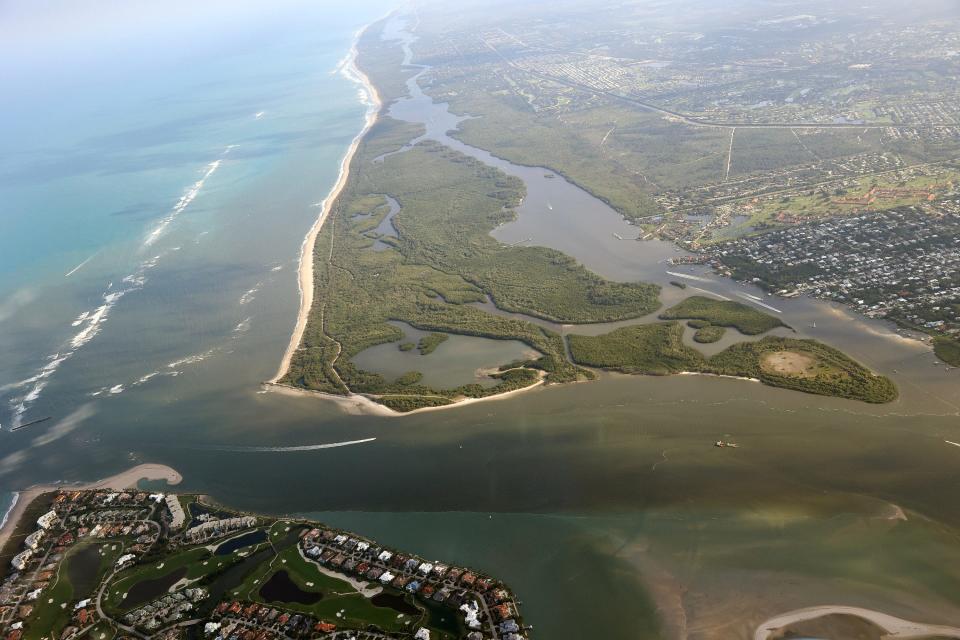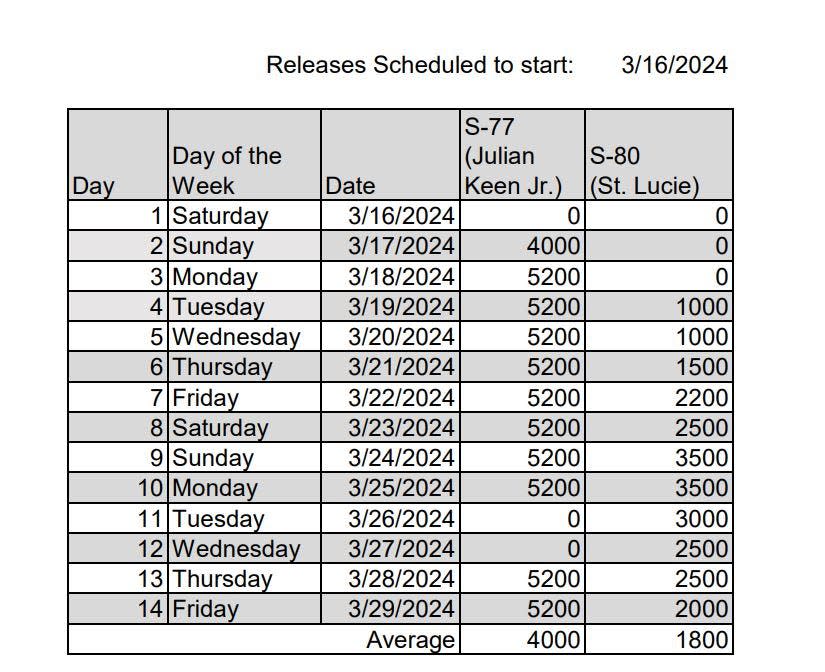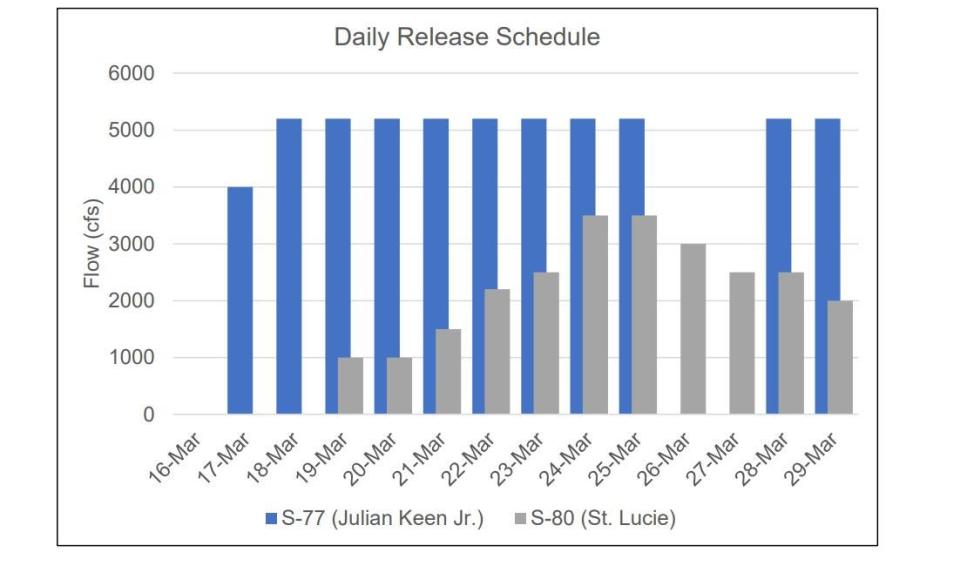DEP warns of toxic algae bloom, but Army Corps will continue Lake Okeechobee discharges
The state has issued a toxic blue-green algae alert for Lake Okeechobee Park, but the Army Corps of Engineers on Monday said it will continue discharges to the St. Lucie and Caloosahatchee rivers.
The bloom observed on the north side of the lake March 12 tested positive for the microcystin toxin, according to the Florida Department of Environmental Protection's Algal Bloom Dashboard. DEP explained Tuesday morning to TCPalm that the sample had a "trace level of microcystins detected" and that it's important "the public should follow the (health department's) precautionary guidelines regardless of the toxin level."
"We are aware of the state’s reporting of conditions in the system and will, as of now, continue with our current plan for releases," spokesperson J.P. Rebello said. "We may change releases if we see conditions that warrant a shift from our current plan."
Lake Okeechobee discharges flow rate

About 15 billion gallons of water will be dumped into the St. Lucie River over the next two weeks — in addition to the 30 billion gallons already discharged since Feb. 17, according to a schedule the Army Corps released late Friday.
The latest 14-day discharge cycle began Saturday with three consecutive days of zero discharges and will continue with 11 consecutive days of discharges from March 19-29 at this daily flow rate:
March 19: 646 million gallons
March 20: 646 million gallons
March 21: 969 million gallons
March 22: 1.4 billion gallons
March 23: 1.6 billion gallons
March 24: 2.3 billion gallons
March 25: 2.3 billion gallons
March 26: 1.9 billion gallons
March 27: 1.6 billion gallons
March 28: 1.6 billion gallons
March 29: 1.3 billion gallons

The Army Corps insists discharges average 1.2 billion gallons per day; however, the river is getting bombed with much more water than that on eight of the 14 days. The agency brings the average down by factoring in the zero discharge days during the 14-day cycle.
The Caloosahatchee River also has been bombed since Feb. 17 and will receive about 2.6 billion gallons per day through March 29.
The Army Corps on March 29 will announce whether it will stop or continue discharges after that, Col. James Booth said last month.
The St. Lucie River received a six-day break from discharges March 13-18, according to the Army Corps charts. Still, low to zero salinity levels and high turbidity are killing oysters, shading seagrass growth in the Indian River Lagoon and dumping silt on the nearshore coral reefs south of the inlet, according to data collected by the Ocean Research and Conservation Association.

What to know about Lake O discharges and toxic algae
The purpose of discharges is to lower the lake level after this winter's above-average rainfall caused by El Niño, Booth said. When discharges began, the lake level was at 16 feet, 4 inches. On March 18, it was 15 feet, 9 inches. So the lake has dropped 7 inches after one month of discharges, with water pouring into the lake the entire month from the Kissimmee River.
What to do if algae is present
The Florida Department of Health advises people to take these precautions:
Do not drink, swim, wade, use personal watercraft, water ski or boat in waters where there is a visible blue-green algae bloom.
Wash your skin and clothing with soap and water if you have contact with algae or water that's discolored or smelly.
Keep pets away from the area. Water containing algae blooms are not safe for animals. Pets and livestock should have a different source of water when algae blooms are present.
Do not cook or clean dishes with water contaminated by algae blooms. Boiling the water will not eliminate the toxins.
Eating fillets from healthy fish caught in freshwater lakes experiencing blooms is safe. Rinse fish fillets with tap or bottled water, throw out the guts and cook fish well.
Do not eat shellfish in waters with algae blooms.
What to do if you see an algal bloom?
Report it to DEP online or via its toll-free hotline at 855-305-3903.
Report fish kills to the Florida Fish and Wildlife Research Institute at 800-636-0511.
Report symptoms from exposure to a harmful algal bloom or any aquatic toxin to the Florida Poison Information Center at 800-222-1222.
Contact your veterinarian if you believe your pet has become ill after consuming or having contact with water containing blue-green algae.
If you have other health questions or concerns about blue-green algae blooms, call Clint Sperber with the Florida Department of Health at 772-924-6697.
For more information on toxic algae blooms
Ed Killer covers the environment for TCPalm. Email him at ed.killer@tcpalm.com.
This article originally appeared on Treasure Coast Newspapers: Florida DEP warns of toxic algae in Lake Okeechobee releases

